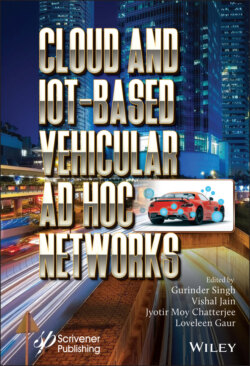Читать книгу Cloud and IoT-Based Vehicular Ad Hoc Networks - Группа авторов - Страница 66
3.7 Embedded Controllers
ОглавлениеIoV generally uses the ARM processor (Advanced RISC Machine) for controlling and monitoring all these parameters. Embedded Controller (ARM Processor) is a 32-bit architecture. It works on thumb architecture and these kinds of embedded systems referred to as Large Scale Embedded Systems. The speed of the ARM processor [29] is operated generally by Gigahertz, now the time cycle calculated as the inverse of the speed (1/T = f). IoVs support the I2C (Inter-Integrated Circuit) protocol on communications of data. On the Internet of Vehicles, all the physical parameters are measured using suitable sensors. These sensors are generally in analog and digital type; the analog quantities are amplified and converted into required digital formats.
The architecture of ITS for human safety shown in Figures 3.5 and 3.6 consists of three modules namely input modules, intermediate modules and output modules. The input module contains ‘N’ number of sensors like speed sensors, vibration sensors, position sensors, etc. Depending upon the condition of the vehicle all sensors will work together and performs operation automatically. The intermediate module has an advanced embedded controller named as ARM 9 processor which accepts the data from the different sensors and acts accordingly. The output module takes the input from the controller during emergency condition. It includes Electronic Control Unit (ECU), Airbag System, Antilock Braking System, Fire Extinguisher, GSM/GPS module which supports for passenger’s life-saving. When a vehicle met with a road accident, In-vehicle sensors detects potentially dangerous situation and the central system informs to other vehicles about emergency conditions.
Figure 3.5 Block diagram of ITS for human safety.
Figure 3.6 Architecture of ITS for human safety.
It then immediately sends information to nearby emergency services. All the data about the disaster, produced by the vehicle frameworks and the sensors connected to the ARM processor monitors all the real-time data and transmits to cloud using IoVs. The most promising solution on the entire communication technologies is based on the support of the Internet of Vehicles. During abnormal condition vehicles can caution all other moving toward vehicles inside two or three hundred meters by sending a short-run ready message which can recursively permeate all through the gathering of vehicles going towards the direction of accident zone.
The above architecture clearly shows the IoVs for a specific application. The data communications are in a single direction bus or bidirectional bus. In I2C protocol two wired communication data (Serial Clock & Serial Data), the clock signal plays a vital role in I2C protocol. All data are monitored in the ARM processor; the entire sensors are acted like slaves. The slave can read/write the data to the ARM processor in an equal interval of time. This read/write can be enabled by the master (ARM processor), the program which is written in master will execute in equal interval of time.
The execution of all the data can be stored on the Internet by implementing IoVs. The IoVs are specifically designed for the automotive purpose to monitor and store the parameters on the Internet. The IoV’s are evolved in IoT which is all the communication which is happened inside of automotive is monitored and stored in a specific protocol named Internet of Vehicles (IoVs). Real data is monitored and stored in the cloud. The above architecture is designed at Harvard (program memory and data memory are separate), these levels of designing are referred to as high scale embedded systems. The instructions are present in the program memory, which is executed continuously. The sensor gives dynamic information is referred to as data, which is stored in data memory. Hence, accessing is very fast in bits-per-second.
This scenario seems to be simple in passing communication and trivial to implement in real-time. At present, the conventional system has two important challenges namely: Safety equipment installation on all vehicles and the Real-Time Distribution algorithm. ARM supports all these challenges to compute very fast executions. By implementing this in real-time, data is streamed and send to the cloud instantly. ARM processor having separate input ports to connect all the sensors. Similarly, it has the output port to connect the LCD/LED; ARM series have the Ethernet port to connect the internet to this standalone system.
